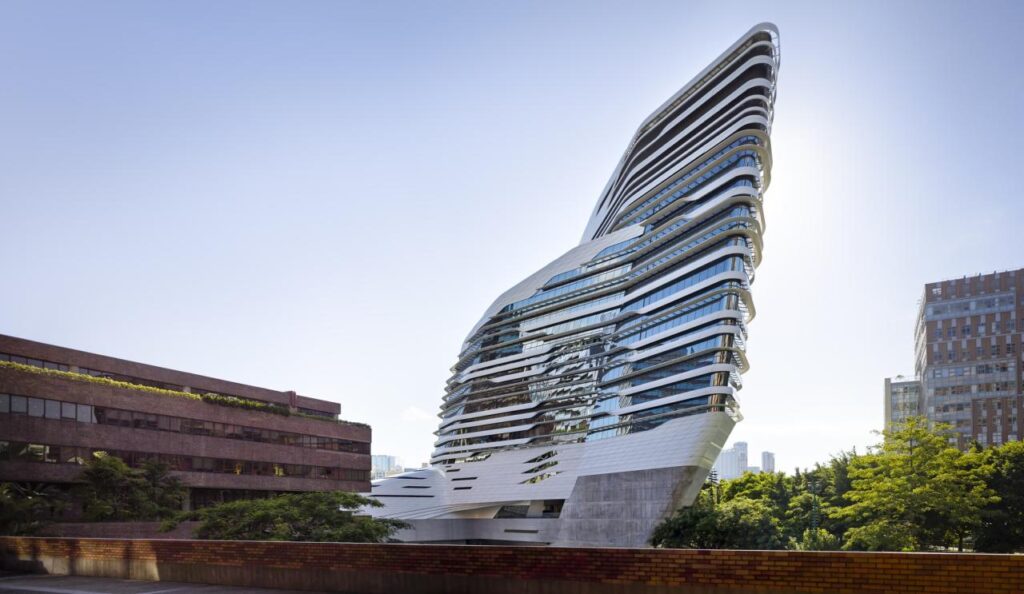The year 2025 marks a transformative period for the world of architecture. The demands of a rapidly urbanizing population, coupled with the urgent need for environmental sustainability and a greater focus on human well-being, are driving unprecedented innovation. The buildings of tomorrow are not just static structures; they are dynamic, intelligent, and deeply interconnected with their environment and the people who inhabit them. This article will delve into the most significant architectural trends and innovations defining the year 2025, exploring how technology, ecology, and social responsibility are converging to create a new generation of buildings. We will examine how these innovations are moving from concept to reality, fundamentally reshaping our cities and the way we live, work, and interact with our surroundings.
The Integration of Artificial Intelligence (AI) and Generative Design

The design process itself is being revolutionized by Artificial Intelligence. AI is no longer a tool for a select few; it is becoming an intrinsic part of the architectural workflow, augmenting human creativity and unlocking new possibilities.
A. Generative Design: This is perhaps the most groundbreaking application of AI. Instead of manually creating a single design, architects can use AI to generate thousands of design options that meet a set of specific parameters. An architect can input constraints such as budget, material choices, energy efficiency targets, and site conditions. The AI then uses powerful algorithms to explore a vast design space, providing the architect with a portfolio of optimized solutions they might never have conceived of on their own. This allows for a more data-driven and efficient design process.
B. Data-Informed Site Analysis: Before a single line is drawn, AI is used to conduct deep site analysis. It can process complex data sets on everything from solar exposure and wind patterns to local traffic flow and zoning regulations. This analysis helps architects make more informed decisions about a building’s orientation, form, and function, ensuring it is perfectly suited to its environment and community.
C. Automation in Documentation: The tedious and time-consuming process of creating construction documents is being automated by AI. The technology can take a 3D model and automatically generate all the necessary 2D plans, sections, and elevations, reducing errors and freeing up the architect’s time to focus on creative problem-solving. This shift allows architects to spend less time on manual tasks and more on visionary design.
The Rise of Sustainable and Regenerative Architecture
Sustainability is no longer a bonus feature; it is a fundamental requirement. Architectural innovations in 2025 are focused on creating buildings that are not just “less bad” but are actively “good” for the environment.
A. Net-Zero and Carbon Neutral Buildings: The goal is to build structures that produce as much renewable energy as they consume over the course of a year. This is achieved through a combination of radical energy efficiency and on-site energy generation, typically from solar panels. Beyond net-zero, architects are striving for carbon-neutral buildings that account for and offset all carbon emissions from their construction and operation.
B. The Circular Economy in Architecture: This concept moves away from the “take-make-dispose” model of construction. Buildings are being designed as “material banks,” where every component has a plan for its eventual reuse or recycling. This involves using reclaimed and recycled materials, and designing for disassembly with mechanical fasteners instead of chemical adhesives. This practice dramatically reduces landfill waste and conserves a building’s embodied energy.
C. Biophilic and Regenerative Design: Architects are incorporating living systems into their designs. Biophilic design uses elements like living walls, green roofs, and abundant natural light to connect occupants with nature. Beyond this, regenerative design seeks to create buildings that have a positive impact on their environment, for example, by purifying stormwater or improving local air quality.
The Revolution in Construction Methods
The way we build is undergoing a major transformation, with a shift from manual, on-site labor to efficient, factory-based production.
A. Modular and Prefabricated Construction: This method involves manufacturing building modules in a controlled factory environment. These modules, which can be entire rooms or apartments, are then transported to the site and assembled. This process is significantly faster, reduces material waste, and allows for a higher degree of quality control. It’s an ideal solution for addressing the urgent demand for housing and infrastructure in urban areas.
B. Robotics and Automation: Robotics are being used on-site and in the factory to perform repetitive and dangerous tasks, such as welding, bricklaying, and material handling. This not only increases safety and efficiency but also allows for a higher degree of precision and quality in the final product.
C. 3D Printing: While still in its early stages for full-scale building, 3D printing is poised to revolutionize construction. It can rapidly produce complex architectural components and even entire structures from a variety of materials. This technology has the potential to dramatically reduce costs and construction time, and to enable unprecedented design freedom.
Building for Resilience and Adaptability

In an age of climate change and social volatility, buildings must be designed to withstand a variety of shocks and stresses.
A. Climate-Informed Design: Architects are using data to design buildings for a more volatile future. This includes designing for extreme heat with passive cooling strategies, building for increased flood risk with elevated foundations, and creating structures that can withstand stronger winds and storms.
B. Multi-Hazard Protection: Resilient buildings are designed to withstand a range of threats, not just one. This includes using fire-resistant materials, designing for seismic activity, and implementing redundant systems like on-site power generation and water storage.
C. The Adaptive Building: The buildings of 2025 are being designed with a long-term view. This includes adaptive reuse, where old buildings are repurposed for new functions, preserving their character and reducing the need for new construction. Additionally, buildings are being designed with flexible floor plans that can be easily reconfigured to meet changing needs over time.
The Focus on Human Health and Well-being
Architects are recognizing that buildings have a profound impact on our health, happiness, and productivity. The new architectural innovations are deeply human-centric.
A. Wellness-Centric Design: This is a holistic approach that integrates principles from public health and psychology into design. It includes optimizing indoor air quality with advanced filtration systems, using non-toxic materials, and designing for acoustic comfort.
B. Smart Homes and Smart Buildings: The buildings themselves are becoming intelligent. They use sensors and AI to monitor and optimize their environment for the occupants. This includes systems that automatically adjust lighting to mimic natural circadian rhythms, regulate temperature for optimal comfort, and monitor air quality in real-time.
C. Community-Focused Design: Modern architecture is moving away from isolated, purely commercial or residential structures. It is focused on creating mixed-use developments that serve as vibrant community hubs, with public spaces, green areas, and integrated retail that encourage social interaction and a sense of belonging.
Conclusion
The year 2025 is a landmark in architectural history, driven by a powerful convergence of technology, sustainability, and human-centric design. The innovations we have explored—from AI-powered generative design and the circular economy to modular construction and biophilic design—are not isolated phenomena. They are interconnected threads that are weaving together a new vision for the built environment. This vision is one where buildings are not just passive shelters but active participants in creating a more resilient, efficient, and equitable world.
The long-term impact of these architectural innovations will be immense. They will lead to a significant reduction in our carbon footprint, a more efficient use of resources, and the creation of healthier and more vibrant communities. The buildings we design today will be a living legacy, a powerful symbol of our ability to face our greatest challenges with ingenuity and creativity. The future of architecture is about creating a symbiotic relationship between humans and our built environment, one where our buildings are designed to serve not only our immediate needs but also the needs of the planet and the generations that will follow.











